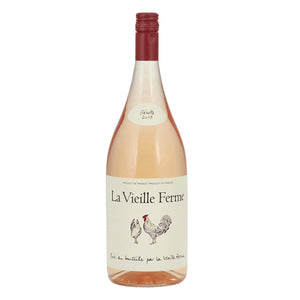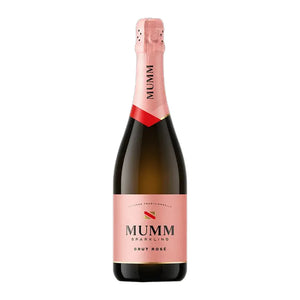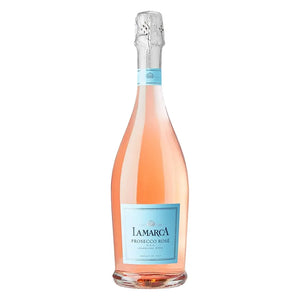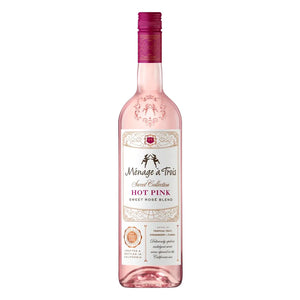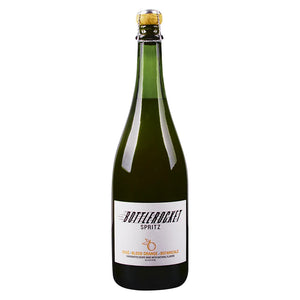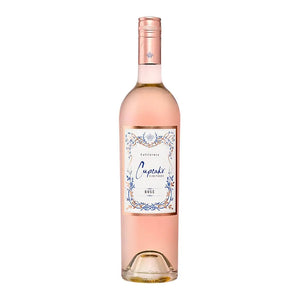Wine
Wine: A World of Flavor from Vine to Glass
Wine is one of the world’s most enduring and revered beverages, crafted through the fermentation of grape juice into a drink rich with complexity, heritage, and cultural significance. Its story begins over 8,000 years ago in ancient Georgia and stretches through the Mediterranean’s classical era, European monastic cellars, and into the New World vineyards that define today’s global wine landscape. Factors like soil composition, microclimate, grape variety, and winemaking technique all influence a wine’s final character, resulting in an incredible spectrum of styles, from crisp whites and robust reds to sparkling wines and fruit-based blends. This diversity is what makes wine not only a timeless companion to food, but also a rewarding sensory experience.
At Juicefly Spirits, we take pride in offering a curated wine selection that honors the full scope of global winemaking. Our collection ranges from bold, expressive California Cabernets to delicate rosés perfect for sunny afternoons, all chosen to complement a wide range of palates and occasions. With fast, same-day delivery available across the Los Angeles area, enjoying premium wine has never been more effortless or more enjoyable.
How Is Wine Made?
Winemaking is both an art and a science, beginning with the careful harvest of fully ripened grapes. These grapes are selected not just for sugar levels, but also for acidity, tannin structure, and overall flavor integrity. Once harvested, the fruit is gently crushed to release its juice. For red wines, fermentation typically takes place with the grape skins intact, this imparts color, tannins, and complexity. In contrast, white wines are usually pressed immediately to separate the juice from the skins, resulting in a lighter body and cleaner profile.
Fermentation is the heart of the process. Yeast, either naturally occurring or carefully selected strains, is added to convert grape sugars into alcohol and carbon dioxide. Every variable matters: fermentation temperature, duration, vessel (stainless steel vs. oak), and yeast selection all impact the wine’s texture, aroma, and structure. Once fermentation is complete, the wine may be aged in stainless steel for a crisp, clean finish or matured in oak barrels to introduce depth, softness, and secondary notes like vanilla or spice. The final steps that include clarification, filtration, and bottling, ensure the wine is polished, stable, and ready to enjoy.
What Are The Different Types of Wine?
Wine is a remarkably diverse beverage, with styles that reflect not just grape variety, but also terroir, fermentation methods, and aging techniques. Each category offers a unique expression of flavor, body, acidity, and tannin, making wine one of the most versatile drinks for both food pairing and standalone enjoyment. Below is a breakdown of the primary wine types every wine lover should know:
-
Red Wine: Produced from dark-skinned grapes, red wine undergoes fermentation with the skins, which contribute color, tannins, and structure. Reds range from full-bodied and age-worthy to fresh and fruit-forward. Key varietals include Cabernet Sauvignon (bold and structured), Pinot Noir (light and silky), Merlot (smooth and approachable), and Syrah/Shiraz (spicy and intense). Red wines pair beautifully with red meats, rich sauces, grilled vegetables, and aged cheeses.
-
White Wine: Typically made from green or yellow-skinned grapes, white wines are fermented without the grape skins, yielding a lighter, more acidic profile. Styles range from zesty and mineral-driven to creamy and oak-aged. Well-known varietals include Chardonnay (which can be buttery or crisp), Sauvignon Blanc (bright and herbaceous), and Riesling (aromatic with high acidity, ranging from dry to sweet). White wines shine with seafood, poultry, fresh herbs, and lighter fare.
-
Rosé Wine: Rosé bridges the gap between red and white wines. It's made by briefly macerating red grape skins with the juice, just enough to impart color and subtle tannins. Depending on the grapes and winemaking style, rosé can be dry and savory or fruit-forward with flavors of strawberry, melon, or citrus. It’s a go-to for warm weather, casual gatherings, and a wide range of appetizers and Mediterranean dishes.
-
Sparkling Wine: Sparkling wines are characterized by their effervescence, created through a second fermentation, either in the bottle (traditional method) or in tanks (Charmat method). Champagne is the benchmark, but styles like Prosecco, Cava, and Crémant offer excellent alternatives. These wines bring elegance to any occasion and are excellent with salty snacks, oysters, fried foods, or simply as an aperitif.
What Are The Different Wine Tasting Notes?
Wine tasting notes are used to describe a wine’s aroma, flavor, mouthfeel, and overall character. They serve as a language for wine professionals and enthusiasts to capture the sensory experience of a wine from the first swirl to the lingering finish. Tasting notes can range from precise technical descriptors to evocative impressions that help guide consumers toward what they’ll enjoy most.
Common Wine Tasting Categories
- Fruit Notes: Most wines express primary fruit characteristics. Red wines often feature notes like black cherry, plum, blackberry, raspberry, or fig. White wines might showcase apple, pear, citrus, peach, or tropical fruits like pineapple and mango.
- Floral and Herbal Notes: Certain varietals are known for delicate floral or herbal qualities. Riesling may exhibit honeysuckle or jasmine. Sauvignon Blanc is often herbaceous, with notes of grass, bell pepper, or basil.
- Spice and Earth: These secondary notes often come from oak aging or the grape’s natural profile. Expect vanilla, clove, cinnamon, or pepper in oak-aged wines. Earthy wines like Pinot Noir or Syrah can reveal mushroom, forest floor, or wet stone aromas.
- Oak and Toast: Oak barrels add depth and complexity. Look for hints of toasted oak, caramel, nutmeg, or smoke especially in Chardonnay, Rioja, or Napa reds.
- Minerality and Acidity: These refer to non-fruit elements and texture. Wines described as “minerally” may remind you of crushed rocks or chalk. High-acid wines taste crisp and mouthwatering, often described as zesty or refreshing.
How to Pair Wine with Food?
Pairing wine with food is all about creating balance, enhancing the flavors of both the dish and the wine. While personal preference always matters, a few core principles can help you confidently choose the right bottle for any occasion.
Basic Wine Pairing Guidelines
- Match Intensity: Delicate dishes pair best with lighter wines, while bold, rich foods need wines with enough structure to stand up to them. Light-bodied white wines like Sauvignon Blanc pair beautifully with salads, seafood, and goat cheese. Full-bodied reds like Cabernet Sauvignon work well with grilled meats, hearty stews, and aged cheeses.
- Complement or Contrast Flavors: You can either align flavors or create contrast for balance. Creamy pasta with a buttery Chardonnay complements the richness. Spicy Thai food with an off-dry Riesling contrasts heat with sweetness and acidity.
- Balance Acidity and Salt: High-acid wines cut through fat and salt, making them ideal for fried or salty foods. Sparkling wines and crisp whites are excellent with dishes like sushi, oysters, and charcuterie.
- Consider Tannins: Tannic wines like Syrah or Malbec pair best with protein-rich dishes, think steak or lamb. Protein softens tannins and brings out the wine’s fruitiness.
- Sweet Meets Sweet: When pairing with dessert, the wine should be as sweet or sweeter than the dish. Try Port with dark chocolate or Sauternes with crème brûlée.
Wine Delivery in Los Angeles & Nationwide Shipping
Shopping for premium wine online is effortless with Juicefly Spirits. You can choose a bold red for dinner, a crisp white for unwinding, or a sparkling wine to celebrate. We offer same-day wine delivery throughout the Los Angeles area, along with secure nationwide shipping right to your door.
If you're located in Los Angeles, you can enjoy fast, same-day spirits delivery, often within just 60 minutes. We serve key neighborhoods like West Hollywood, Downtown LA, Santa Monica, Culver City, Pasadena, and beyond. Every order includes real-time tracking and is managed by our local delivery team for a smooth, professional experience.
For customers outside of LA, Juicefly Spirits ships a curated selection of wines nationwide in durable, temperature-conscious packaging. Building your spirits collection or sending a thoughtful gift, we ensure a seamless, safe shipping experience from checkout to delivery.
Please note: You must be 21 or older to purchase alcohol. An adult signature is required upon delivery.


